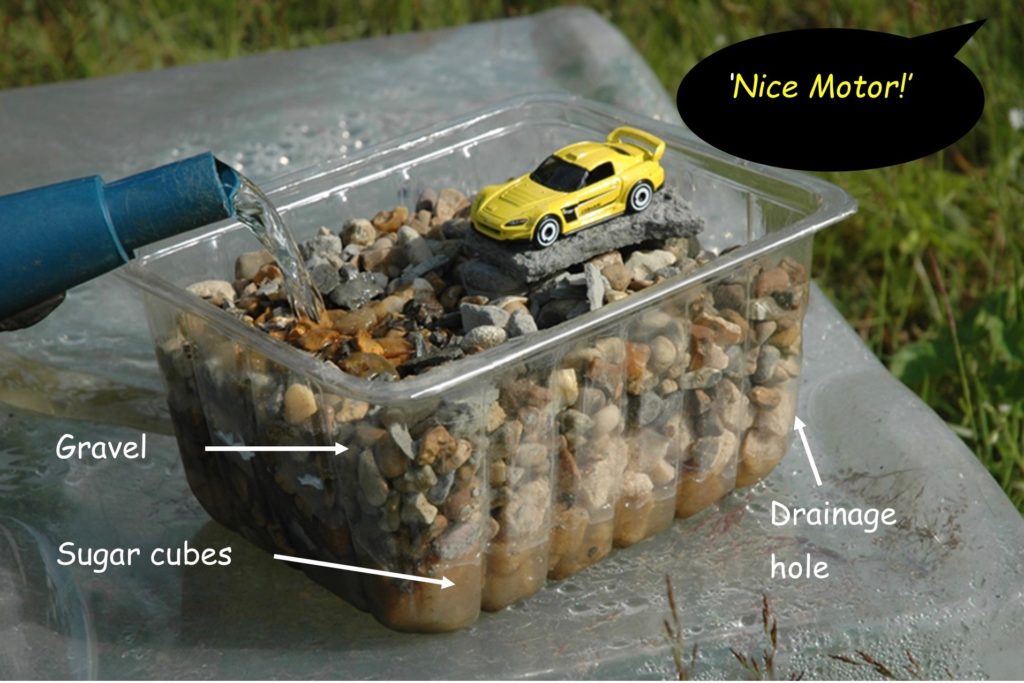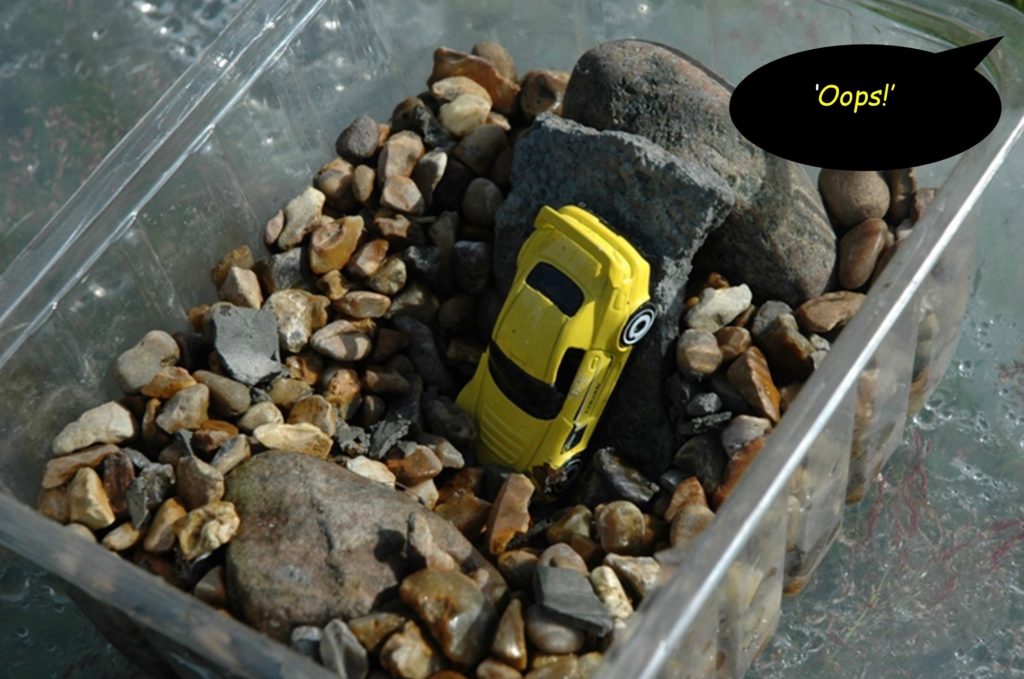Why are there sink holes at the foot of Box Hill?
Box Hill and Ranmore are made of chalk rock. Rainwater is very slightly acid, so over thousands of years it gradually dissolves the chalk, which is alkaline. Where water gets underground into the cracks and crevices in the chalk it creates ever-widening underground streams and cavities. Usually the ground slumps slowly, but sometimes and without warning it can end with a crunch!
To find out what happens, we can do an experiment using something else that dissolves in water much quicker than chalk. What better than a box of sugar cubes.
This experiment is sticky and messy, so do it on a draining board in the kitchen (minus the washing up) or better still, outside. It is not a good idea to try this one in your bedroom. Adults should be supervised at all times!

You will need:
- a recycled deep plastic food tray (the sort you find strawberries in)
- a few hands full of gravel
- A box of sugar cubes
- A flat pebble or stone
- A model car
- A jug or watering can with some water. If the water is warm, it works quicker.
Here’s what to do:
- First, enjoy the fruity, sweet and juicy taste of the strawberries from the tray.
- Then, turn the plastic tray upside down and make a small drainage hole at the base of one end, so the tray leaks. You can do this with a pair of scissors.
- Make a layer of sugar cubes about 3 centimetres deep along the bottom of the tray. It doesn’t have to be even, so you can make a deeper layer in the middle if you want to.
- Add a layer of gravel over the top of the sugar about 3 centimetres deep.
- Place a flat stone on top to represent the driveway.
- Put the model car in on top of the pebble on the gravel and admire how clean it is.
- When your friends are assembled to watch the show, pour the water slowly and gently into the gravel at the opposite end to the drainage hole.
- Say goodbye to the car.
What just happened?
The sugar cubes have dissolved leaving a cavity underneath. Where there was a solid surface, there is now a cavity, so the surface caved in. In nature, if there is a solid surface over the chalk (perhaps a layer of clay), the cavities can get bigger and bigger until they collapse.
That is what caused the Constable’s Pit in Mickleham and other, smaller sink holes in farmer’s fields.
It has to be said that most sink holes we hear about are caused by human activity. They are from pipe bursts or drainage leaks under roads where the pipes run.

Discover more about sink holes and Box Hill’s hidden underworld in the Cockerel Press book


